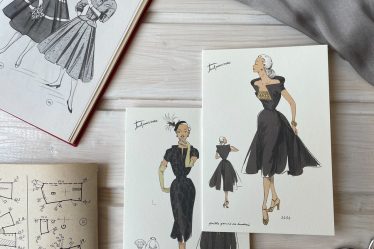
Browzwear, an innovator in 3D digital solutions for fashion, and LIMITED, the product innovation arm at global sourcing service provider Otto International have announced the opening 3D product development sharing centers in Dhaka, Bangladesh and Dongguan China. Digi-hubs are a new type of facility that will offer valuable upskilling and peer to peer sharing to the garment sector in both the manufacturing-rich regions that have been hard hit by the pandemic.
Digi-hubs are designed to enable manufacturers, suppliers, designers, pattern-makers and technical designers to learn the latest 3D technology as it applies to product design and production.
Browzwear has been a rising presence in fashion schools over the last few years. In November, Browzwear Chief Commercial Officer Lena Lim told how important it is to have a connection with education. “The next generation in bright minds will enable digital transformation to bring about more agile and sustainable fashion industries. It is impossible to transform without new skills and a new mindset. That is why we need to partner with schools and be a driving force in the next era for fashion and design. The company’s vision is clearly expanding beyond emerging graduates to new markets. The hubs in China, Bangladesh and India are designed to speed up large-scale digital transformation within the industry. This will create efficiency, reduce waste, and increase sustainability.”
New Digi-hubs offer digital training to garment professionals in areas hard hit by the pandemic.
The program’s participants will have the opportunity to work with Browzwear VStitcher which is a top 3D platform in the industry. The hubs will not only provide 3D prototyping training, but also include fabric digitization, including Browzwear Fabric Analyzer (which converts the physical properties and textures into 3D), and Vizoo’s scanning system. This allows for true-to-life 3D simulation, rendering, and rendering.
Sharon Lim, Co-Founder and CEO of Browzwear said that the COVID-19 pandemic highlighted many inequalities in the global apparel supply chain, as well as the importance of digital transformation in the industry. CEO of Browzwear says: “We are extremely proud to be part the solution that empowers professionals and businesses, especially in areas where inequalities have had an enormous impact.”
Browzwear is an expert in driving processes, from rapid fitting and grading through to tech packs and all that are needed to create the actual garment. This is why they have more than 650 clients worldwide including PVH Group, Columbia Sportswear and VF Corporation. Browzwear’s venture partner, LIMITED, offers fully customized 3D digital product design services and solutions for the sourcing process. Katharina Bobrowski is the general manager of Browzwear. She shares Lim’s views and values on the future fashion industry. “As technology continues its disruptive impact on the apparel industry, we must ensure that everyone has equal opportunities to succeed.”
Lim says that Browzwear’s ultimate goal is to “bring together all of the technologies and tools that apparel businesses require to make every step from concept to commerce more efficient.” She believes that the partnership with Otto International represents another step towards the company’s goal to be a leader in positive industry change and that sharing learning is the way forward. Dhaka, Dongguan were the first hubs to open. But they won’t be last. We are exploring additional manufacturing-dominant areas in Vietnam and Indonesia, where increased digitization can have a transformative impact on business, the environment and people’s lives.”
Karina Ochoa, a Browzwear user who is also a 3D apparel designer, started her career in Columbia. She says that most of the process still follows the traditional 2D method. “There were always errors from miscommunications, even though we spoke the same language with the factories and pattern makers, meant that even simple garments required multiple samples. Each one could take upto a month to get.” She moved to NYC to study Fashion Institute of Technology. There she discovered Browzwear. Businesses will be able to make amazing changes to their processes if they have access 3D-trained employees. It will allow them to be more competitive, reduce their environmental impact, and improve the lives of their customers.





